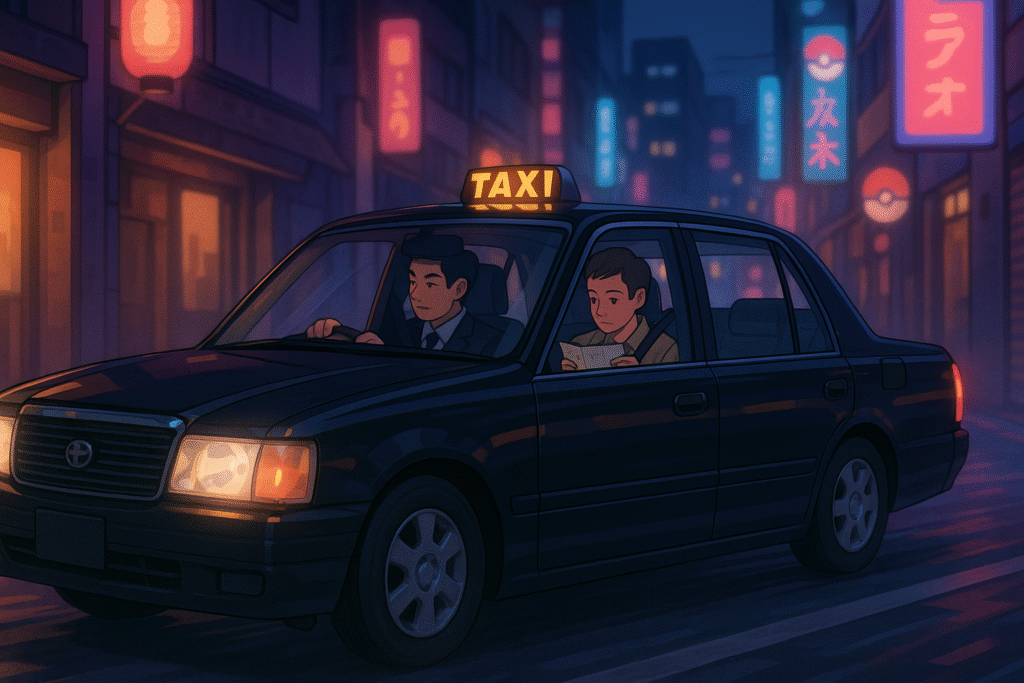Are you dreaming of living in Japan’s winter wonderland? Looking for a lifestyle that combines natural beauty, outdoor recreation, and affordable living? Understanding the Hokkaido cost of living is essential for anyone considering relocation to Japan’s northernmost island, known for its breathtaking landscapes, world-class skiing, delicious seafood, and distinctive four-season lifestyle.
Through extensive research and insights from residents currently living in the region, this comprehensive guide breaks down exactly what you can expect to spend on housing, food, transportation, and other essentials in Hokkaido. Whether you’re drawn to the cosmopolitan atmosphere of Sapporo, the international ski resort town of Niseko, or the peaceful rural communities nestled among volcanic mountains, this article provides the financial clarity needed for a successful transition in 2025.
What Makes Hokkaido Special?
Hokkaido (北海道), Japan’s second-largest island, is administratively divided into one prefecture of the same name. Unlike Honshu’s dense urban corridors, Hokkaido is characterized by vast natural spaces, lower population density, and a climate more reminiscent of northern Europe or Canada than typical Asian regions. This unique combination creates a lifestyle distinct from anywhere else in Japan.
While our previous guides have explored the Tohoku cost of living in northern Honshu, the Kanto cost of living around Tokyo, the Chubu cost of living in central Japan, the Kansai cost of living in the Osaka region, the Chugoku cost of living in western Honshu, and the Kyushu cost of living in the subtropical south, Hokkaido presents its own distinct value proposition. More spacious and nature-oriented than any other Japanese region, yet still offering modern amenities and infrastructure, Hokkaido represents an increasingly popular destination for both domestic and international residents seeking an alternative to Japan’s congested urban centers.
Hokkaido Cost of Living: The Quick Answer
The average monthly cost of living in Hokkaido ranges from ¥170,000 to ¥300,000 ($1,150-$2,000) for a single person, depending on your location and lifestyle. Sapporo, the prefectural capital, represents the higher end of this spectrum as the region’s largest urban center, while smaller cities and rural areas offer significantly lower living costs but typically require car ownership and stronger Japanese language skills.
Sapporo: The Urban Center of Hokkaido
Sapporo, Hokkaido’s largest city and the fifth-largest in Japan, provides valuable insight into the cost of living in the region’s urban areas. Let’s examine the typical expenses based on the most recent data:
Housing in Sapporo
| Housing Type | Monthly Cost (JPY) | Range |
|---|---|---|
| 1-bedroom apartment (city center) | ¥75,000 | ¥60,000-¥90,000 |
| 1-bedroom apartment (outside center) | ¥44,000 | ¥40,000-¥52,000 |
| 3-bedroom apartment (city center) | ¥107,500 | ¥85,000-¥130,000 |
| 3-bedroom apartment (outside center) | ¥80,000 | ¥60,000-¥100,000 |
These figures reveal one of Hokkaido’s compelling advantages—housing costs that are approximately 50-55% lower than Tokyo and 15-20% lower than cities like Fukuoka in Kyushu. This significant price difference makes Sapporo particularly attractive for those who want urban amenities without the extreme costs associated with Japan’s largest metropolitan areas.
For those interested in purchasing property, the average price per square meter in Sapporo’s city center is approximately ¥350,000, while locations outside the center average ¥250,000 per square meter—roughly a quarter of Tokyo’s prices and even lower than what we found in our Chubu cost of living guide.
Food Costs in Hokkaido
Food expenses in Sapporo provide insight into the broader Hokkaido cost of living:
Restaurant Prices
- Inexpensive restaurant meal: ¥1,400
- Mid-range restaurant (three-course dinner for two): ¥4,000
- Fast food combo meal: ¥750
- Domestic beer (0.5L): ¥425
- Cappuccino: ¥545
- Soft drink: ¥138
Grocery Prices
- Milk (1L): ¥222
- Bread (500g loaf): ¥189
- Rice (1kg): ¥1,250
- Eggs (dozen): ¥261
- Local cheese (1kg): ¥1,250
- Chicken fillets (1kg): ¥1,050
- Beef (1kg): ¥3,000
- Apples (1kg): ¥500
- Bananas (1kg): ¥435
- Tomatoes (1kg): ¥562
- Potatoes (1kg): ¥406
- Onions (1kg): ¥321
- Lettuce (1 head): ¥221
- Bottled water (1.5L): ¥113
While some items like rice appear more expensive than in southern regions covered in our Kyushu cost of living guide, Hokkaido excels in the quality and value of dairy products, seafood, and specific produce items like potatoes and corn. When shopping at local markets or dining out in Hokkaido, knowing basic Japanese can be extremely helpful. Our 100+ Essential Japanese Phrases guide includes many useful expressions for navigating markets and restaurants in the region.
Transportation Costs
Transportation in Sapporo is well-developed but becomes more limited in smaller communities:
- Single local transport ticket: ¥250
- Monthly transportation pass: ¥7,500
- Taxi start fare: ¥670 (plus ¥260 per kilometer)
- Gasoline (1L): ¥173
For those considering car ownership, a new Toyota Corolla costs approximately ¥2,466,600, while a Volkswagen Golf is around ¥5,057,495. While Sapporo offers excellent public transportation, including Japan’s only subway system outside the major metropolitan areas, most other parts of Hokkaido require a car for comfortable living due to greater distances between communities and limited public transit options.
Utilities and Services
Monthly utility costs in Sapporo:
- Basic utilities (electricity, heating, cooling, water, garbage) for 85m² apartment: ¥45,625
- Mobile phone plan with calls and 10GB+ data: ¥4,080
- Internet (60 Mbps or more, unlimited data): ¥6,250
These utility costs are notably higher than in any other region we’ve examined, including the Tohoku cost of living and Kanto cost of living guides. This significant difference primarily reflects Hokkaido’s harsh winter climate, which necessitates substantial heating expenses from November through April. The long, cold winters are the most significant cost factor that distinguishes Hokkaido from other Japanese regions.
Healthcare and Education
Japan’s universal healthcare system provides consistent service across regions:
- Private health insurance supplements the national system and costs approximately ¥5,000-¥10,000 monthly depending on coverage.
- A doctor’s visit typically costs ¥1,000-¥3,000 after insurance.
For families with children, education expenses in Sapporo include:
- Preschool/Kindergarten (private, full day): ¥39,800 monthly
- International primary school: ¥1,600,000 yearly
These educational costs are substantially lower than Tokyo and moderately lower than Osaka, making Hokkaido an attractive option for expatriate families, similar to what we found in our Chugoku cost of living guide. If you’re moving with children who will attend Japanese schools, our Hiragana & Katakana Cheat Sheet and JLPT N5 Kanji Cheat Sheet provide excellent resources for helping them adapt to the Japanese education system.
Love Japan? Stay in the Loop!
Get the latest cultural insights & updates straight to your inbox. 📩
Beyond Sapporo: Other Hokkaido Cities
The Hokkaido cost of living varies significantly across the island. Here’s how other notable cities compare:
Asahikawa
- Housing: 15-25% lower than Sapporo
- Food: Similar to Sapporo
- Transportation: Less comprehensive public transit than Sapporo
- Advantage: Central location with excellent access to outdoor activities and lower snowfall than coastal areas
Hakodate
- Housing: 20-30% lower than Sapporo
- Food: 5-10% lower than Sapporo
- Transportation: Good rail connections but limited city transit
- Advantage: Beautiful harbor setting, milder climate than northern Hokkaido, and rich historical heritage
Obihiro
- Housing: 25-35% lower than Sapporo
- Food: 5-10% lower than Sapporo, with exceptional agricultural products
- Transportation: Limited public transit necessitating car ownership
- Advantage: Excellent food culture, central location in fertile Tokachi Plain
Niseko Area
- Housing: Varies dramatically by season, with premium prices during winter
- Food: 20-30% higher than Sapporo due to tourist-oriented businesses
- Transportation: Very limited public transit
- Advantage: World-class ski resorts, international community, and investment potential
For those interested in smaller cities and rural areas within Hokkaido, our guide to Living in the Japanese Countryside & Cost of Living in Rural Japan offers additional valuable insights.
Seasonal Considerations in the Hokkaido Cost of Living
Hokkaido’s dramatic seasonal changes create distinct financial patterns throughout the year:
Winter (November-April)
Winters in Hokkaido are extremely cold and snowy, with temperatures regularly dropping below -10°C (14°F) and snowfall accumulations of several meters in many areas. This results in heating costs that can add ¥15,000-¥25,000 to monthly utility bills compared to summer months. Additional winter expenses include snow tires, snow removal services, and heavier clothing. These costs are significantly higher than what residents face in southern regions like Kyushu or Okinawa.
Summer (June-September)
Summers in Hokkaido are mild and pleasant, rarely exceeding 30°C (86°F). This creates the significant advantage of minimal air conditioning costs during summer months, saving ¥5,000-¥10,000 compared to regions like Kanto or Kyushu during the same period. Many Hokkaido homes don’t even have air conditioning installed, relying instead on natural ventilation during the brief summer season.
Average Salaries in Hokkaido
Understanding local salary levels helps contextualize the Hokkaido cost of living:
The average monthly salary in Sapporo after taxes is approximately ¥217,067. This is substantially lower than Tokyo (¥364,667) and somewhat lower than Osaka (¥312,000), but higher than many regional cities across Japan. When combined with lower housing costs but higher utility expenses, the overall financial equation remains favorable for many residents.
Industry-specific average monthly salaries (after tax) in Hokkaido:
- Tourism/Hospitality: ¥200,000-¥300,000 (highly seasonal)
- Education (English teaching): ¥220,000-¥280,000
- IT/Technology: ¥250,000-¥350,000
- Agriculture/Dairy: ¥180,000-¥250,000
- Public sector: ¥230,000-¥320,000
- Entry-level positions: ¥170,000-¥210,000
When compared to our analysis of Kansai’s cost of living, Hokkaido generally offers slightly lower salaries with comparable overall living costs, though distributed differently across expense categories.
Comparing Hokkaido and Other Japanese Regions
For a clearer picture of how Hokkaido compares to other Japanese regions, consider this comparison for a single person’s monthly expenses (excluding rent):
| Region/City | Monthly Expenses | % Difference from Hokkaido (Sapporo) |
|---|---|---|
| Hokkaido (Sapporo) | ¥130,000 | Baseline |
| Kanto (Tokyo) | ¥146,978 | 13.1% higher |
| Kansai (Osaka) | ¥116,613 | 10.3% lower |
| Chubu (Nagoya) | ¥120,000 | 7.7% lower |
| Chugoku (Tottori) | ¥100,000 | 23.1% lower |
| Kyushu (Fukuoka) | ¥110,000 | 15.4% lower |
| Tohoku (Sendai) | ¥95,000 | 26.9% lower |
This comparison reveals that Hokkaido’s overall expenses (excluding rent) are actually higher than most other regions outside Tokyo, primarily due to heating costs. However, when combining these expenses with the lower housing costs, the total monthly budget remains competitive with other major Japanese cities.
Money-Saving Tips for Living in Hokkaido
To maximize your budget in this northern region:
- Invest in proper insulation – Well-insulated housing can reduce heating costs by 30-50%
- Consider kerosene heaters – Often more economical than electric heating for single rooms
- Take advantage of local food – Hokkaido’s agricultural products are often cheaper when purchased directly from farmers
- Buy winter gear during off-season sales – Essential winter clothing and equipment is significantly discounted in spring and summer
- Use local transit passes in Sapporo – The Sapporo One-Day Card and other passes offer excellent value for urban residents
- Consider shared housing in ski areas – Housing costs in resort areas can be dramatically reduced through shared accommodations
- Learn basic Japanese numbers – Our Counting to 100 in Japanese guide will help you understand prices and negotiate effectively
Who Will Thrive in Hokkaido?
The Hokkaido cost of living and lifestyle make this region particularly well-suited for:
- Outdoor enthusiasts passionate about skiing, snowboarding, hiking, or fishing
- Space-seekers tired of cramped urban Japanese living
- Remote workers who can leverage lower housing costs while earning from elsewhere
- Families looking for more affordable housing and education options
- Agricultural entrepreneurs interested in Hokkaido’s farming opportunities
- Winter lovers who appreciate the distinct four-season climate
- Food enthusiasts drawn to Hokkaido’s renowned dairy, seafood, and produce
Frequently Asked Questions About Hokkaido Cost of Living
How do Hokkaido winters affect the cost of living?
Hokkaido’s winters significantly impact living expenses, adding approximately ¥15,000-¥25,000 to monthly utility bills during the coldest months. This represents the most substantial difference between Hokkaido and other Japanese regions. However, these increased costs are offset by lower housing prices and minimal cooling expenses in summer. Additionally, residents quickly adapt with strategies like proper insulation, layered clothing, and efficient heating systems focused only on rooms in active use.
Is Sapporo affordable compared to Tokyo?
Sapporo offers substantially better housing value than Tokyo. With apartment rental prices 50-55% lower than the capital, residents can afford significantly more space or save considerably on housing costs. While grocery prices are comparable and utilities are higher, the overall cost of living remains much lower than Tokyo. For those seeking urban amenities without metropolitan prices, Sapporo presents one of Japan’s best value propositions, similar to what we found in our Fukuoka cost of living analysis.
Do I need a car in Hokkaido?
In Sapporo, public transportation is excellent, making car ownership optional. However, in virtually all other parts of Hokkaido, a car is essential due to limited public transportation networks, greater distances between communities, and heavy snowfall that can make walking impractical for much of the year. Budget approximately ¥30,000-¥50,000 monthly for car ownership, including loan payments, insurance, maintenance, fuel, and seasonal tire changes.
Which areas of Hokkaido are most affordable?
The most affordable areas are small to mid-sized cities like Bibai, Takikawa, Rumoi, and Monbetsu, where housing costs can be 50-70% lower than Sapporo. However, these areas offer fewer employment opportunities for non-Japanese speakers and require stronger language skills. For a balance of affordability and convenience, cities like Asahikawa, Kitami, and Tomakomai offer good value while maintaining adequate infrastructure.
How does Hokkaido compare to Tohoku for affordability?
While both regions offer lower costs than Tokyo or Osaka, they present different financial equations. Hokkaido typically has higher utility costs but slightly lower food costs than the areas covered in our Tohoku cost of living guide. Housing costs are comparable in major cities (Sapporo vs. Sendai), though Hokkaido offers more space for the same price. The key difference lies in lifestyle—Hokkaido offers more outdoor recreation opportunities and natural space but experiences harsher winters.
How much Japanese language ability is needed in Hokkaido?
Basic Japanese skills are important throughout Hokkaido, with Sapporo offering the most English support. While tourist areas like Niseko have developed substantial English infrastructure, daily life outside these areas requires at least fundamental Japanese. Our 100+ Essential Japanese Phrases guide provides an excellent starting point for daily communication. Compared to Tokyo, you’ll find significantly less English support in Hokkaido, making language learning more important for comfortable long-term living.
How much should I budget for initial moving costs to Hokkaido?
Plan for:
- Initial housing costs (deposit, key money, agent fee): equivalent to 2-3 months’ rent
- Basic furniture and appliances: ¥150,000-¥250,000 (higher than other regions due to necessary heating equipment)
- Winter clothing and gear: ¥50,000-¥100,000 (essential for newcomers)
- Utility deposits and setup fees: ¥30,000-¥50,000
- Moving expenses: ¥100,000-¥300,000 depending on distance and volume
In total, having ¥600,000-¥1,000,000 (approximately $4,000-$6,700) available for initial setup costs is advisable.
Conclusion: Is Hokkaido Right for You?
The Hokkaido cost of living represents a unique value proposition within Japan, offering dramatically lower housing costs offset by higher seasonal utility expenses. For those who appreciate distinct seasons, outdoor recreation, and more spacious living environments, Hokkaido provides an exceptional quality of life that many find worth the trade-offs.
Whether you choose Sapporo’s urban convenience, the international atmosphere of Niseko, the historical charm of Hakodate, or the agricultural heartland of Tokachi, Hokkaido offers diverse environments to match various lifestyles and budgets. Compared to our explorations of the Kanto cost of living, Kansai cost of living, and other regional guides, Hokkaido emerges as perhaps the most distinctive option—offering substantially lower housing costs than Kanto, more space than anywhere in Honshu, and a lifestyle that appeals particularly to nature lovers, outdoor enthusiasts, and those seeking an alternative to Japan’s densely populated urban corridors.
For additional resources on living in Japan, including language guides to help with your transition, visit our resources page where you can find free guides like our popular “Counting to 100 in Japanese” and “Hiragana & Katakana Cheat Sheet.”
Are you considering a move to Hokkaido? Share your questions or plans in the comments below!
This article was last updated in January 2025 with the most current pricing information available for the Hokkaido region. While I write from the Netherlands, this guide compiles research and firsthand accounts from expats living in the region to provide you with accurate insights.
Join the Wakoku Insider List!
Join 500+ Japan enthusiasts exploring language & culture. 🎌




